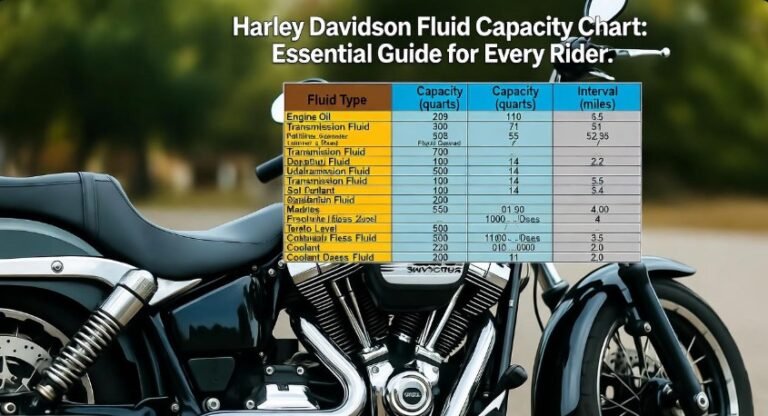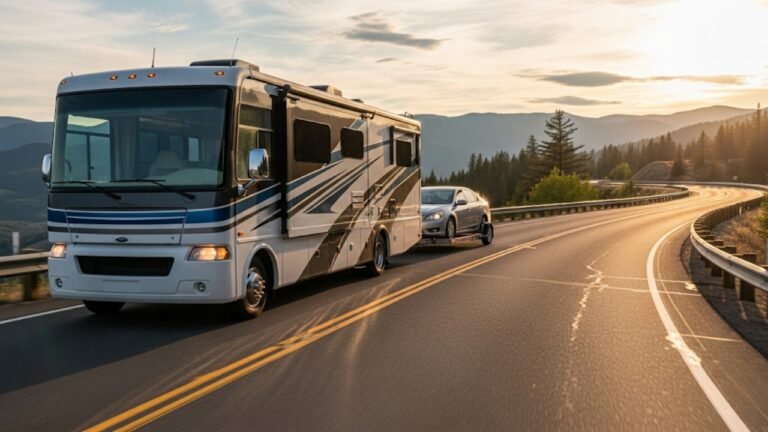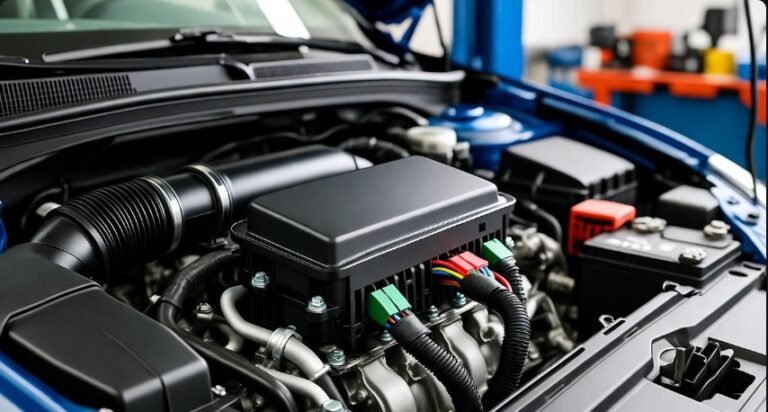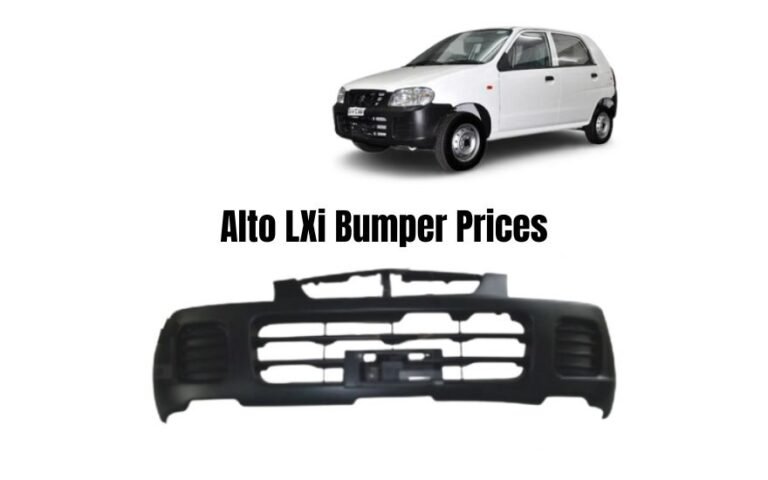Glamour Bike Disc Brake Kit: Ultimate Guide

Upgrade your ride with a glamour bike disc brake kit for superior stopping power, enhanced safety, and a sleek aesthetic. This guide breaks down everything you need to know to choose and install the perfect kit for your bicycle.
Key Takeaways
- Select the right disc brake kit for your bike type.
- Understand mechanical vs. hydraulic disc brake differences.
- Gather essential tools before starting installation.
- Follow step-by-step instructions for mounting.
- Properly adjust and bed-in your new brakes.
- Maintain your disc brakes for optimal performance.
Choosing Your Glamour Bike Disc Brake Kit
Adding a glamour bike disc brake kit to your bicycle is a fantastic way to boost both its performance and its appearance. Disc brakes offer more reliable stopping power than traditional rim brakes, especially in wet or muddy conditions. They also contribute to a cleaner, more modern look for your bike. But with so many options available, how do you choose the right kit? This guide will walk you through everything you need to know, from understanding the basic types to getting them installed and ready for the road.
Whether you’re a seasoned cyclist looking to upgrade or a beginner eager to learn, we’ll make the process clear and straightforward. We’ll cover the essential components, the differences between mechanical and hydraulic systems, and what to consider when making your purchase. Get ready to transform your cycling experience with a cutting-edge glamour bike disc brake kit.
Understanding Disc Brake Types: Mechanical vs. Hydraulic
The first crucial decision when selecting a glamour bike disc brake kit is choosing between mechanical and hydraulic systems. Both offer improvements over rim brakes, but they operate differently and come with distinct advantages and disadvantages.
Mechanical Disc Brakes
Mechanical disc brakes use a standard brake cable to actuate the brake mechanism. When you pull the brake lever, the cable pulls a mechanism that moves the brake pads against the rotor attached to your wheel’s hub. They are generally simpler and more affordable than hydraulic systems.
- Pros:
- Lower cost.
- Easier to install and maintain for DIY enthusiasts.
- Cables are readily available and easy to replace.
- Good stopping power, especially compared to rim brakes.
- Cons:
- Can feel less powerful and require more hand effort than hydraulics.
- Cable housing can collect dirt and water, affecting performance.
- May require more frequent adjustments.
Hydraulic Disc Brakes
Hydraulic disc brakes use fluid within sealed lines to transmit force from the brake lever to the brake caliper. When you squeeze the lever, you push fluid, which in turn pushes the brake pistons, applying pressure to the pads and rotor. This system offers superior modulation and stopping power.
- Pros:
- Superior stopping power and control (modulation).
- Less hand effort required for braking.
- Sealed system, less affected by dirt and weather.
- Self-adjusting pads as they wear down.
- Cons:
- Higher cost.
- More complex to install and maintain (bleeding is required).
- Requires specialized tools for maintenance.
- Fluid leaks can be a problem if not maintained.
Which Type is Right for You?
For most riders seeking a true upgrade in performance and a sleek, modern look for their glamour bike disc brake kit, hydraulic systems are the preferred choice. They offer a noticeable improvement in braking feel and power. However, if you’re on a tighter budget or prefer a simpler system that’s easier to service yourself, mechanical disc brakes are still a solid option.
Key Components of a Disc Brake Kit
A complete glamour bike disc brake kit typically includes several essential parts. Understanding what each component does will help you with installation and troubleshooting.
Brake Levers
These are what you squeeze to initiate braking. They connect to the brake caliper via either a cable (mechanical) or a hydraulic hose.
Brake Calipers
The caliper is mounted to the frame or fork and houses the brake pads. It squeezes the pads against the rotor when the brake lever is actuated.
Brake Pads
These friction materials are critical for stopping power. They come in different compounds (organic/resin or metallic/sintered) that affect performance, longevity, and noise.
- Organic (Resin) Pads: Quieter, better initial bite in dry conditions, but wear faster and can fade in heat.
- Metallic (Sintered) Pads: More durable, perform better in wet and muddy conditions, and handle heat well, but can be noisier and take longer to bed in.
Brake Rotors
These are the metal discs that attach to your wheel hubs. They are what the brake pads clamp onto. Rotors come in various diameters (e.g., 160mm, 180mm, 203mm), with larger rotors providing more stopping power but also adding weight.
Brake Hoses/Cables
For hydraulic systems, these are fluid-filled tubes. For mechanical systems, these are steel cables housed within a protective sheath.
What You’ll Need: Tools and Supplies
Before you begin installing your glamour bike disc brake kit, ensure you have all the necessary tools and supplies. Having everything ready will make the process smoother and prevent frustration.
Essential Tools
- Allen wrench set (metric, typically 3mm, 4mm, 5mm)
- Torque wrench (recommended for proper tightening)
- Cable cutters (for mechanical brakes)
- Pliers
- Screwdrivers (Phillips and flathead)
- Brake bleeding kit (for hydraulic brakes, specific to your brake brand and fluid type)
- Mineral oil or DOT fluid (depending on your hydraulic brake fluid type)
- Rag or shop towels
- Gloves (especially for hydraulic fluid)
- Possibly a cassette lockring tool and chain whip if removing the rear wheel
Optional but Helpful Supplies
- Brake cleaner
- Grease (for bolts and threads)
- Zip ties or cable management clips
Installation Guide: Step-by-Step
Installing a glamour bike disc brake kit can be a rewarding DIY project. This guide provides a general overview. Always refer to the specific instructions that come with your chosen kit, as variations exist between manufacturers.
Step 1: Preparation and Removal of Old Brakes
Start by thoroughly cleaning your bike, especially around the areas where the new brakes will be mounted. If you have existing rim brakes, remove them completely. For disc wheels, ensure your hubs are compatible with disc brake rotors. If your frame or fork does not have IS (International Standard) or Post Mounts, you might need adapters.
Step 2: Mounting the Rotors
The rotor attaches to the wheel hub. Most rotors use a 6-bolt pattern, secured with small bolts. Others use a Centerlock system, which requires a specific lockring tool. Ensure new rotors are installed with the correct side facing outwards. Tighten the bolts evenly in a star pattern to the manufacturer’s specified torque. For 6-bolt rotors, a torque of 4-6 Nm is common. For Centerlock, consult your hub manufacturer.
Step 3: Mounting the Brake Calipers
The caliper mounts to either the frame (rear) or fork (front) using dedicated disc brake mounts. For Post Mounts, you might install the caliper directly. For IS mounts, you will likely need an adapter, especially for larger rotors. Attach the caliper loosely with its mounting bolts. Do not fully tighten them yet.
Step 4: Routing and Connecting Brake Lines/Cables
This is where mechanical and hydraulic systems differ significantly.
- Mechanical: Route the brake cable from the lever housing to the caliper. Secure the cable housing to the frame using existing cable stops or zip ties. Connect the cable to the caliper’s actuation arm. Adjust for initial tension.
- Hydraulic: Route the pre-filled hydraulic hose from the lever to the caliper. You may need to cut the hose to the correct length. Ensure you use the correct fittings (barbs and olives) for your specific brake system when connecting to the lever and caliper. This step often requires specialized tools and knowledge to ensure a proper seal and prevent leaks. If you are not comfortable with hydraulic systems, consider professional installation for this part.
Step 5: Adjusting the Calipers
With the caliper mounted loosely, attach the brake pads to the caliper. Squeeze the brake lever firmly and hold it. While holding the lever, tighten the caliper mounting bolts. Release the lever; the rotor should spin freely without rubbing. If there is rubbing, loosen the bolts slightly, re-center the caliper, and retighten.
Step 6: Adjusting Brake Levers and Cables (Mechanical)
For mechanical brakes, fine-tune the cable tension using the barrel adjusters on the lever or caliper. You want enough tension so that the brake engages effectively without the lever being too hard to pull, and without the pads dragging when released.
Step 7: Bleeding Hydraulic Brakes (If Necessary)
If you installed a new hydraulic system or replaced hoses, the system will need to be bled to remove any air bubbles. This process involves using a bleeding kit to push fresh fluid through the system. Follow the manufacturer’s specific instructions for your brake model. This is a critical step for hydraulic brake performance and safety.
Pro Tip: Always ensure your bicycle frame and fork are compatible with disc brakes. Look for the specific mounting tabs designed for calipers and rotor clearance.
Step 8: Final Checks
Spin both wheels to ensure the rotors are not rubbing against the pads. Test the brakes by spinning a wheel and applying the brake lever. The wheel should stop smoothly. Check that both front and rear brakes are functioning effectively. Ensure all bolts are tightened to the correct torque.
Understanding Rotor Size and Its Impact
The diameter of your brake rotors can significantly impact your bike’s braking performance. When choosing a glamour bike disc brake kit, consider the intended use of your bike and the rotor sizes available.
| Rotor Size (mm) | Typical Use Case | Pros | Cons |
|---|---|---|---|
| 140mm, 160mm | Road bikes, gravel bikes, cross-country mountain bikes, lighter riders. | Lightweight, less prone to frame/fork flex. | Less stopping power, can overheat on long descents. |
| 180mm | All-mountain, trail mountain bikes, heavier riders, e-bikes. | Good balance of stopping power and weight, better heat dissipation. | Slightly heavier than smaller rotors. |
| 200mm, 203mm | Downhill mountain bikes, gravity riding, e-bikes, tandem bikes. | Maximum stopping power, superior heat management. | Heavy, can cause frame/fork flex, may require adapters. |
For a versatile glamour bike disc brake kit, 160mm or 180mm rotors often provide a good balance. If you’re a heavier rider or plan on tackling steep descents, consider larger rotors. Always ensure your frame, fork, and wheels can accommodate the rotor size you choose, and use adapters if necessary.
The Importance of Bedding-In Your New Brakes
After installing your new glamour bike disc brake kit, it’s crucial to “bed-in” the brakes. This process ensures the brake pads and rotors bond properly, maximizing their performance and longevity. Skipping this step can lead to reduced stopping power and potential noise.
How to Bed-In Your Disc Brakes
- Find a safe, open area with no traffic.
- Accelerate to a moderate speed (e.g., 15-20 mph).
- Apply the brakes firmly but do not lock up the wheels. Slow down to walking speed.
- Repeat this process 10-20 times for each brake (front and rear).
- Allow the brakes to cool down completely between cycles. You should feel the brakes getting stronger as you progress through the cycles.
This procedure transfers a small amount of pad material to the rotor surface, creating an optimal interface for maximum friction and stopping power. It’s especially important for metallic pads.
Maintenance for Your Glamour Bike Disc Brake Kit
To ensure your glamour bike disc brake kit continues to perform at its best, regular maintenance is key. Here’s what you should do:
Regular Checks
- Inspect pads for wear: Check the thickness of the pad material. Replace them when they reach about 1mm or as per manufacturer guidelines.
- Clean rotors: Use a dedicated brake cleaner or isopropyl alcohol to clean rotors. Avoid touching them with greasy fingers.
- Check for leaks (hydraulic): Inspect hoses and connections for any signs of fluid leakage.
- Listen for noises: Squealing or grinding can indicate worn pads, contamination, or alignment issues.
- Test lever feel: Ensure levers are firm and don’t feel spongy (especially with hydraulics, which indicates air in the system).
Periodic Maintenance
- Bleed hydraulic brakes: Typically recommended annually or when the lever feel changes. Consult the SRAM or Magura service documentation for detailed procedures.
- Replace cables and housing (mechanical): Worn cables can affect shifting and braking performance.
- Lubricate pivot points: A small amount of light lubricant on caliper pivot points can help ensure smooth operation.
Troubleshooting Common Disc Brake Issues
Even with a top-tier glamour bike disc brake kit, you might encounter minor issues. Here are some common problems and how to fix them:
Problem: Rotor Rubbing
Cause: Caliper not centered, bent rotor, loose caliper mounts, or wheel not seated properly.
Solution: Re-center the caliper by loosening bolts, squeezing the lever, and retightening. Check if the rotor is bent; if so, it may need replacement or careful straightening. Ensure wheel is fully seated in dropouts.
Problem: Spongy Brake Lever (Hydraulic)
Cause: Air in the hydraulic system.
Solution: Bleed the brakes. This removes air bubbles and restores firm lever feel. Ensure you use the correct fluid type (DOT or mineral oil) for your brakes.
Problem: Squealing Brakes
Cause: Contaminated pads or rotors, glazed pads, improperly seated pads, or worn pads.
Solution: Clean rotors with brake cleaner. If contamination is suspected, remove and clean pads or replace them. If pads are glazed, lightly sand the surface or replace them. Ensure pads and rotors are compatible.
Problem: Weak Braking Power
Cause: Worn pads, contaminated pads/rotors, air in hydraulic lines, or incorrectly adjusted mechanical brakes.
Solution: Inspect and replace worn pads. Clean rotors and pads. Bleed hydraulic brakes. Adjust cable tension for mechanical brakes.
Frequently Asked Questions (FAQ)
Q1: Do I need a specific frame and fork for disc brakes?
A1: Yes, your bicycle frame and fork must have dedicated disc brake mounts (Post Mount or IS Mount) to install a disc brake kit. Most modern bikes come equipped with these, but older models may not.
Q2: Can I mix and match brands for my disc brake components?
A2: While some components are cross-compatible, it’s generally best to use parts from the same brand or at least the same hydraulic fluid type (DOT vs. mineral oil) for optimal performance and safety. Consult manufacturer specifications.
Q3: How often should I bleed my hydraulic disc brakes?
A3: For most riders, bleeding once a year is sufficient. However, if you notice a spongy lever feel, it’s time to bleed them sooner. Aggressive riding or exposure to extreme conditions might require more frequent bleeding.
Q4: Are disc brakes heavier than rim brakes?
A4: Yes, disc brake systems (calipers, rotors, levers, and hoses/cables) are generally heavier than comparable rim brake systems. However, the performance and safety benefits often outweigh the added weight for many riders.
Q5: What is the difference between Post Mount and IS Mount?
A5: Post Mount (PM) is a more modern standard where the caliper bolts directly onto bosses on the fork or frame. International Standard (IS) is an older standard that typically requires an adapter to mount calipers, especially for larger rotors.
Q6: Can I convert my bike from rim brakes to disc brakes?
A6: Only if your bike frame and fork are specifically designed with disc brake mounts. If they are not, a direct conversion is not possible without significant frame modifications, which are not recommended.
Q7: How do I stop my disc brakes from squealing?
A7: Squealing is often caused by pad contamination or glaze. Clean rotors with brake cleaner and consider replacing pads if they are contaminated or worn. Ensure pads are properly seated and bedded-in. Sometimes, metallic pads are inherently noisier than organic ones.
Conclusion
Upgrading to a glamour bike disc brake kit is a significant enhancement for any cyclist. By understanding the types of brakes, their components, and the installation process, you can confidently choose and fit a system that perfectly suits your needs. Remember the importance of proper installation, bedding-in, and regular maintenance to ensure your new brakes deliver reliable stopping power and a superior riding experience, keeping you safe and in control on every journey.






